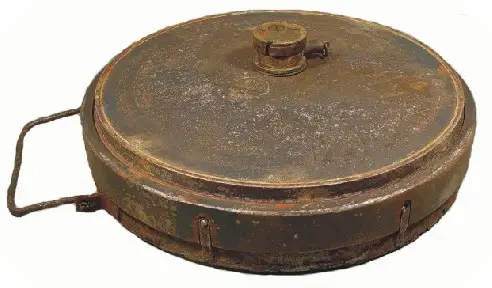Tellermine 35 anti-tank mine – T. Mi. 35
History, technical sheet and photo

Tellermine 35 anti-tank mine history
It was in the 1930s that German engineers developed a new anti-tank mine. Its production began in 1935 under the name « Tellermine 35 ». It is a metal mine with a pressure plate that is widely used by the German armed forces throughout the Second World War and especially during the Battle of Normandy.
Tellermine 35 is also used along the Atlantic Wall, attached to wooden piles located on beaches or at the back of the coastline to prohibit the landing of allied gliders. Two detonators can be installed to prevent bearing.
A version designed specifically for the desert is produced (Tellermine 35 S), equipped with a filter preventing sand from engulfing inside the metal structure. Its operating system serves as a model for Tellermine 42 and Tellermine 43.
Tellermine 35 anti-tank mine specification
Creator/User: Germany
Denomination: T. Mi. 35 – Tellermine 35
Type of mine : anti-tank
Operating system: pressure plate (reaction from 90 kg at the edge or 180 kg at the center of the plate)
Explosive: 5,5 kg of TNT
Total weight: 9,1 kg
Height: 7,6 cm
Diameter: 31,8 cm
